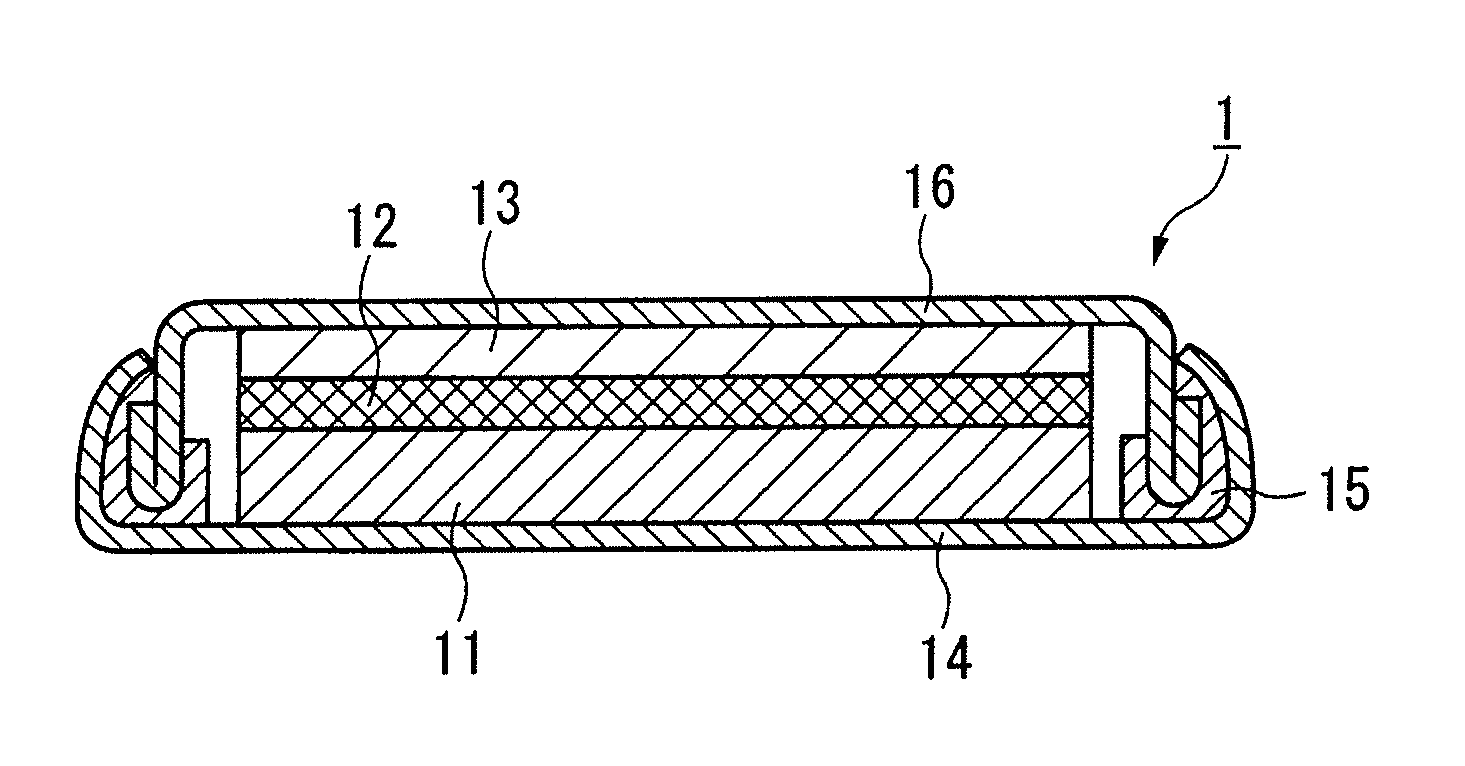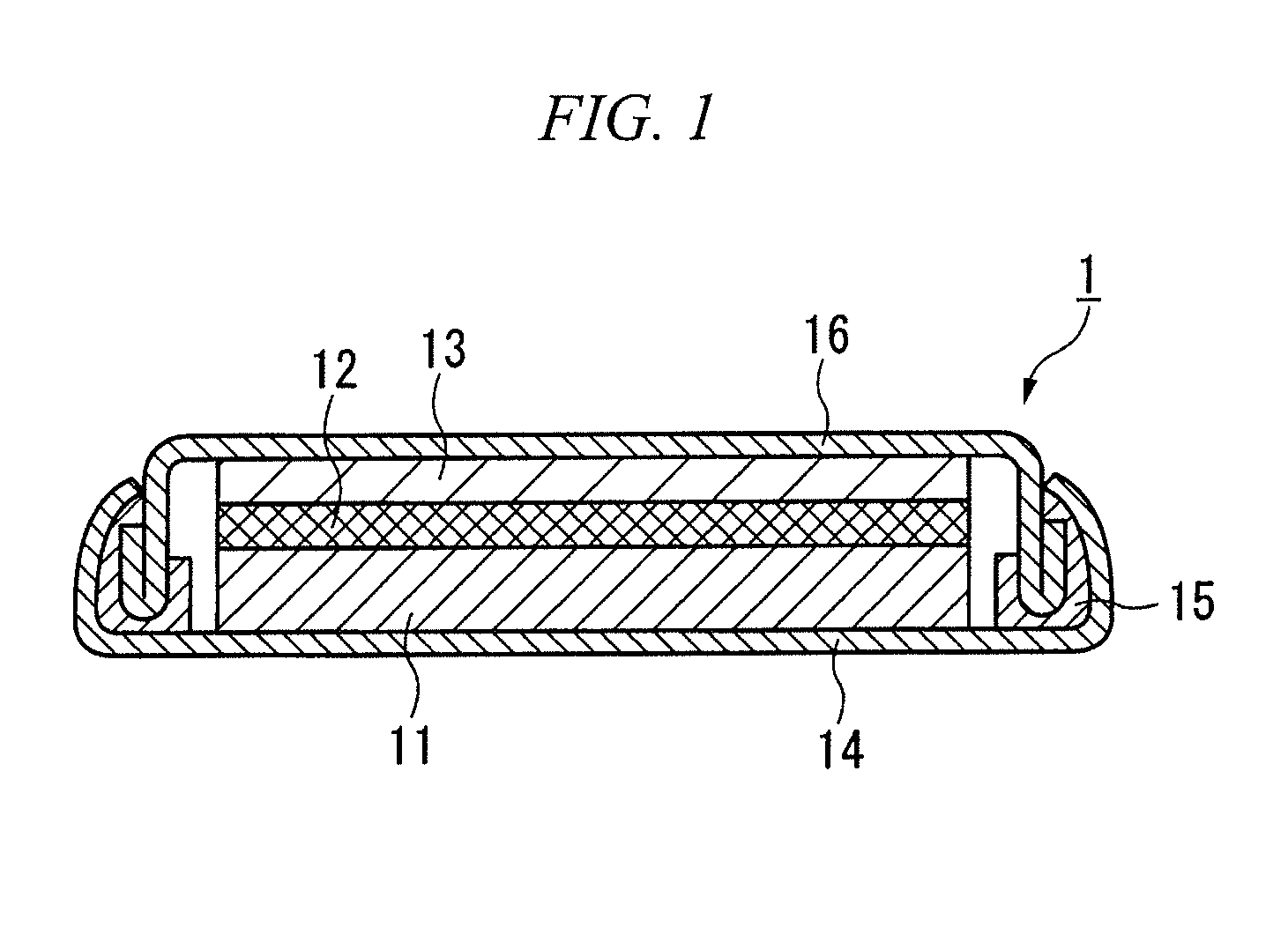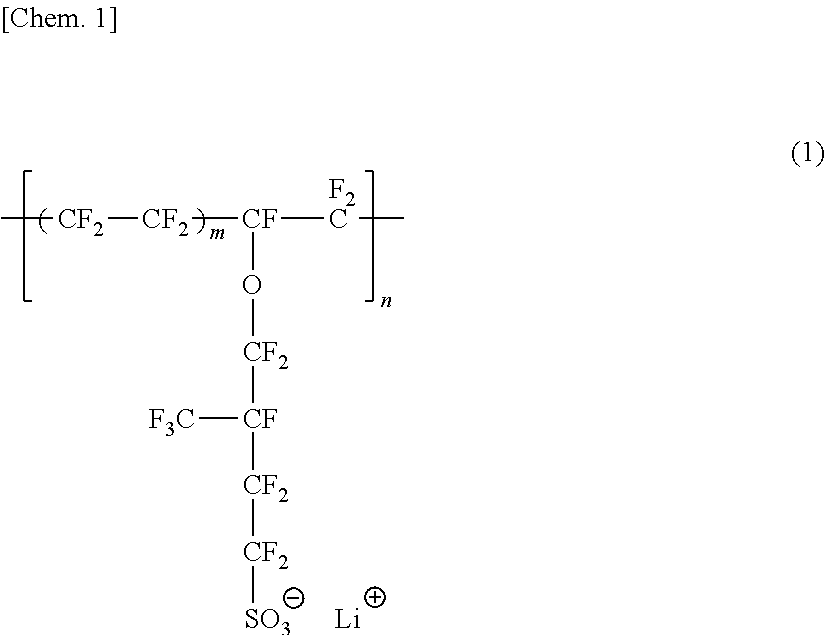Lithium ion secondary battery
a secondary battery and lithium ion technology, applied in the direction of non-aqueous electrolyte cells, conductors, electrochemical generators, etc., can solve the problems of secondary batteries that use nonaqueous electrolytic solutions, secondary batteries may be a cause of accidental fire, and secondary batteries have a risk of internal short circuit, etc., to achieve the effect of sufficient battery performan
- Summary
- Abstract
- Description
- Claims
- Application Information
AI Technical Summary
Benefits of technology
Problems solved by technology
Method used
Image
Examples
example 1
Manufacture of Electrolyte Membrane
[0111]A THF (2.0 g) solution containing 10% by mass of PVdF-HFP, PAA-Li (0.136 g) obtained in (2) described above, BF3O(C2H5)2 (0.248 g), and a mixed solvent (1.80 g) of EC and GBL (EC / GBL=3 / 7 (volume ratio)) were weighed and collected in a sample bottle, and THF (2 mL) was added thereto, followed by stirring at 25° C. for 24 hours. A predetermined amount of the obtained solution was cast onto a petri dish (a diameter of 7.5 cm) made of polytetrafluoroethylene, on which polyolefin nonwoven fabric (a porosity of 76%) was set. Thereafter, the petri dish was moved into the vacuum desiccator and was dried therein for 24 hours by supplying a dry nitrogen gas at a flow rate of 2 L / min to obtain an electrolyte membrane.
[0112]A negative electrode (manufactured by Hohsen Corporation) and a positive electrode (manufactured by Hohsen Corporation) were punched into a disk shape having a diameter of 16 mm. In addition, the electrolyte membrane obtained as above...
example 2
[0114]A THF solution (2.0 g) containing 10% by mass of PVdF-HFP, PAA-Li (0.144 g) obtained in (2) described above, (BF3O((CH3)3C)2) (0.366 g), and a mixed solvent (1.80 g) of EC and GBL (EC / GBL=3 / 7 (volume ratio)) were weighed and collected in a sample bottle, and THF (2 mL) was added thereto, and hereinafter, by the same method as that of Example 1, a coin-type cell was manufactured.
example 3
Manufacture of Electrolyte Membrane
[0119]A THF solution containing 10% by mass of PVdF was prepared. In addition, PAA-Li (2.00 g) obtained in (2) described above and BF3O(C2H5)2 (3.64 g) were mixed with THF (14.36 g), thereby preparing a THF solution of PAA-L1 and BF3O(C2H5)2.
[0120]The THF solution (1.0 g) containing 10% by mass of PVdF, the THF solution (0.682 g) of PAA-L1 and BF3O(C2H5)2, and a mixed solvent (0.9 g) of EC and GBL (EC / GBL=3 / 7 (volume ratio)) were weighed and collected in a sample bottle, followed by stirring at 25° C. for 24 hours. A predetermined amount of the obtained solution was cast onto a petri dish (a diameter of 5 cm) made of polytetrafluoroethylene. Thereafter, the petri dish was moved into the vacuum desiccator and was dried therein for 24 hours by supplying a dry nitrogen gas at a flow rate of 2 L / min to remove THF to obtain an electrolyte membrane. The blending amount of each of the components is shown in Table 2. In addition, the number of moles (mmol)...
PUM
| Property | Measurement | Unit |
|---|---|---|
| ion conductivity | aaaaa | aaaaa |
| ion conductivity | aaaaa | aaaaa |
| lithium ion transference number | aaaaa | aaaaa |
Abstract
Description
Claims
Application Information
 Login to View More
Login to View More - R&D
- Intellectual Property
- Life Sciences
- Materials
- Tech Scout
- Unparalleled Data Quality
- Higher Quality Content
- 60% Fewer Hallucinations
Browse by: Latest US Patents, China's latest patents, Technical Efficacy Thesaurus, Application Domain, Technology Topic, Popular Technical Reports.
© 2025 PatSnap. All rights reserved.Legal|Privacy policy|Modern Slavery Act Transparency Statement|Sitemap|About US| Contact US: help@patsnap.com



